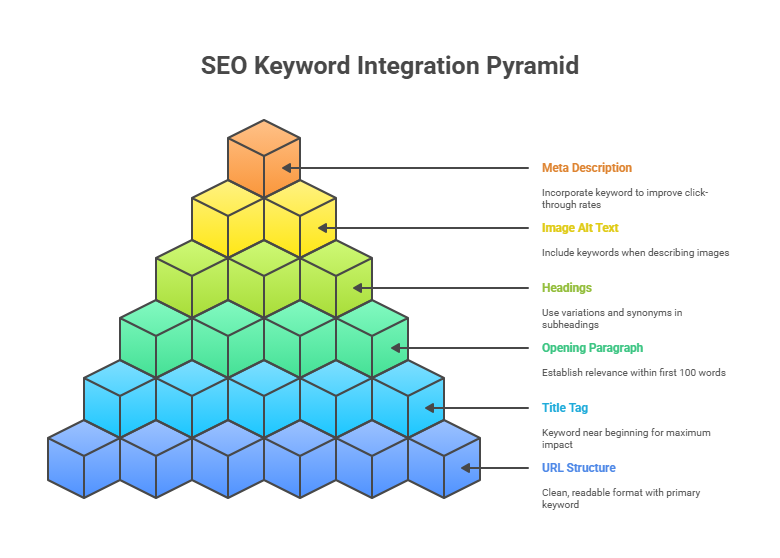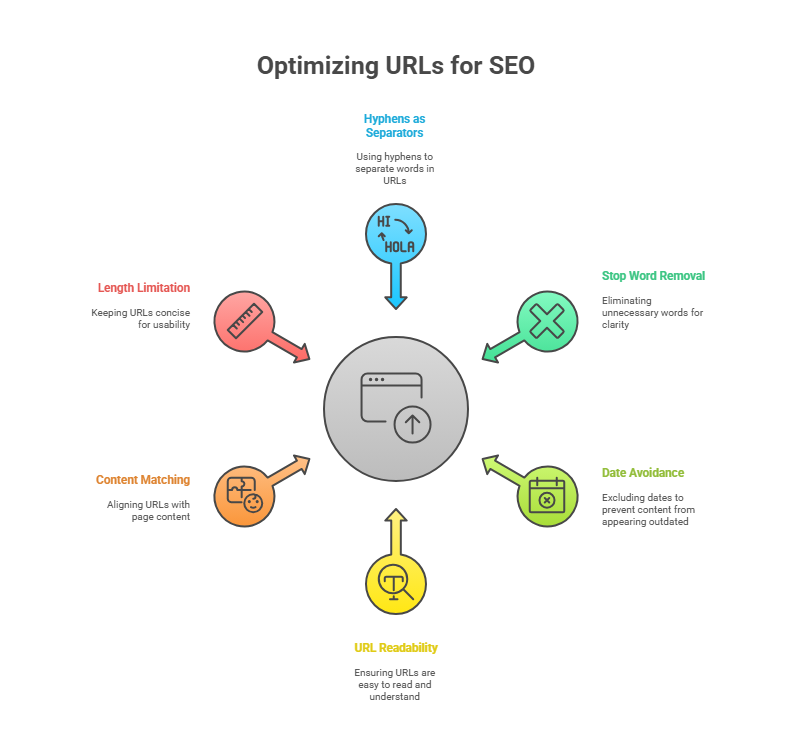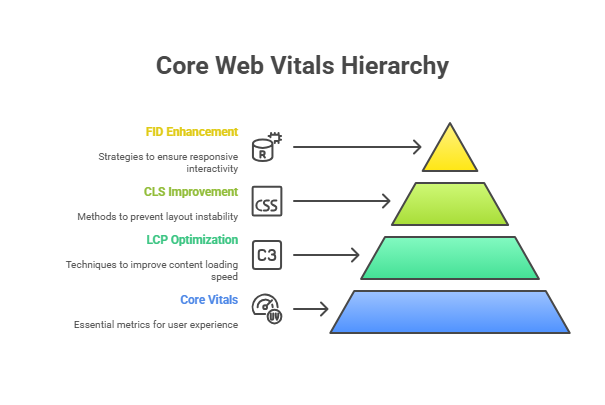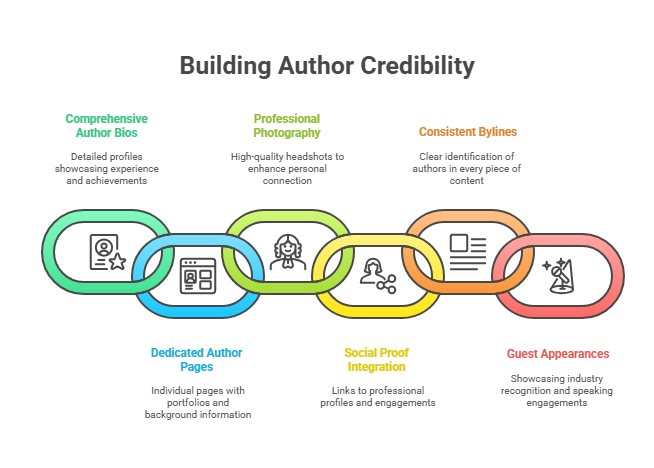Google’s search algorithm becomes more sophisticated every year, rewarding websites that prioritize genuine user value over keyword manipulation.
The SEO tactics that dominated five years ago could now damage your rankings if implemented incorrectly.
This comprehensive, step-by-step on-page SEO checklist covers everything you need to boost rankings, drive organic traffic, and increase click-through rates—all optimized for 2025’s search landscape.
According to Semrush’s latest SEO report, businesses implementing comprehensive on-page optimization see an average 67% increase in organic traffic within six months.
Modern SEO success depends on creating genuinely helpful content while providing search engines with clear signals about your page’s relevance and authority.
This guide will show you exactly how to achieve both objectives systematically.
Quick Overview: What This Guide Covers
Before diving into specific tactics, here’s your complete roadmap for mastering on-page SEO in 2025. Each section builds upon the previous one, ensuring you develop a cohesive optimization strategy:
- Advanced Keyword Research and Implementation – Discover high-converting keywords and use them strategically
- Title Tags, Meta Descriptions, and Header Optimization – Create compelling snippets that maximize click-through rates
- URL Structure Best Practices – Build SEO-friendly URLs that users and search engines prefer
- Image Optimization and Multimedia Strategy – Enhance visuals for speed, accessibility, and search visibility
- Core Web Vitals and Performance Optimization – Master technical factors that directly impact rankings
- Strategic Internal Linking – Create content clusters that boost domain authority
- Schema Markup Implementation – Help search engines understand your content structure
- Mobile-First Optimization – Optimize for mobile-first indexing requirements
- E-E-A-T Trust Signals – Build expertise, experience, authoritativeness, and trustworthiness
- Content Maintenance Strategy – Keep your content competitive long-term
So, Let’s get started in the details.
Master Keyword Research and Implementation
Successful on-page SEO begins with understanding exactly what your target audience searches for and why. According to Ahrefs research, 94% of keywords get fewer than 10 searches per month, making strategic keyword selection crucial for success.
Identify High-Value Primary and Secondary Keywords
Your keyword research strategy should utilize tools like Ahrefs Keywords Explorer, SEMrush, or Moz Keyword Explorer. However, most marketers focus exclusively on search volume, missing critical ranking opportunities.
“Successful SEO in 2025 requires understanding search intent first, keywords second. Focus on what users actually want to accomplish.” – Brian Dean, Backlinko
Your primary keyword should meet these essential criteria:
- Search Intent Alignment: The keyword must match exactly what your content delivers
- Realistic Competition Level: Assess keyword difficulty relative to your domain authority
- Commercial Viability: Prioritize keywords that drive business results, not just traffic
- Optimal Search Volume: Target 1,000-10,000 monthly searches for most niches
Secondary keywords expand your content’s topical relevance and capture long-tail search variations. Research shows that pages targeting 3-5 related keywords typically outrank those focusing on single terms.
Pro Strategy: Analyze Google’s “People Also Ask” section and related searches to discover secondary keywords that reflect real user behavior and search patterns.
Implement Keywords Naturally and Strategically
Google’s RankBrain algorithm now understands context, synonyms, and semantic relationships. Keyword stuffing not only fails to improve rankings but actively harms them. Focus on natural implementation in these strategic locations:
- URL Structure: Include your primary keyword in a clean, readable format
- Title Tag: Position the keyword near the beginning for maximum impact
- Opening Paragraph: Establish topical relevance within the first 100 words
- H2 and H3 Headings: Use variations and synonyms in subheadings
- Image Alt Text: Include keywords when describing images accurately
- Meta Description: Naturally incorporate the primary keyword to improve click-through rates
The fundamental rule remains: write for humans first, search engines second. If keyword placement feels forced or unnatural, rephrase the sentence or use a semantic variation instead.

Optimize Title Tags, Meta Descriptions, and Headers
Your title tag and meta description function as your content’s advertisement in search results. They’re often the determining factors in whether users click through to your page or choose a competitor’s result instead.
Craft Compelling, Click-Worthy Title Tags
Effective title tags balance SEO optimization with psychological triggers that compel users to click. Moz research indicates that title tags significantly impact both rankings and click-through rates.
Follow these proven title tag optimization principles:
- Maintain 50-60 Character Limit: Prevent truncation in search results across all devices
- Include Emotional Triggers: Words like “ultimate,” “proven,” “complete,” “essential” increase engagement
- Add Specificity: Include numbers, years, or timeframes that suggest comprehensive coverage
- Front-Load Keywords: Place the most important terms at the beginning of the title
- Create Urgency or Curiosity: Suggest immediate value or insider knowledge
High-Converting Title Tag Formulas:
- “Complete [Topic] Guide ([Current Year] Edition)”
- “[Number] Proven Strategies to [Achieve Goal]”
- “Ultimate [Topic] Checklist for [Target Audience]”
- “How to [Accomplish Task] in [Timeframe] (Step-by-Step)”
Write Meta Descriptions That Drive Clicks
Your meta description serves as advertising copy for your content. While not a direct ranking factor, it significantly influences click-through rates, which indirectly affect rankings.
Meta Description Optimization Guidelines:
- Target 150-160 Characters: Maximize visibility while avoiding truncation
- Highlight Unique Value: Clearly communicate what readers will gain from your content
- Include Subtle Calls-to-Action: Use phrases like “Discover how,” “Learn the secrets,” “Get started”
- Incorporate Primary Keywords: They’ll appear in bold in search results, improving visibility
- Address Search Intent: Directly acknowledge what users are looking for
Example High-Converting Meta Description: “Master on-page SEO with this comprehensive 2025 checklist. Discover proven strategies for keywords, Core Web Vitals, E-E-A-T optimization, and technical improvements that boost rankings fast.”
Structure Headers for Maximum Impact
Proper heading structure improves both user experience and search engine understanding. It creates a logical content hierarchy that helps users quickly find relevant information.
- Single H1 Per Page: Your main title should mirror or closely match your title tag
- Use H2s for Major Sections: Think of these as chapter headings that organize your content
- Use H3s for Subsections: Break down H2 topics into specific, actionable points
- Maintain Logical Hierarchy: Never skip heading levels (H2 to H4 without H3)
- Include Keywords Naturally: Especially in H2 tags where context permits
- Keep Headers Descriptive: Users should understand the section content from the heading alone
Well-structured headings create scannable content that reduces bounce rates and improves user engagement metrics.
Build SEO-Friendly URL Structures

URLs might seem like a minor detail, but they impact both user experience and search engine optimization. Clean, descriptive URLs improve click-through rates and help search engines understand page content.
Create Short, Descriptive, Keyword-Rich URLs
The best URLs function like mini-headlines that clearly communicate page content. Research from Backlinko’s ranking factors study shows that URLs containing keywords tend to outrank those without them.
Optimal URL Example: yoursite.com/on-page-seo-checklist-2025
URL Optimization Best Practices:
- Use Hyphens as Separators: Google treats hyphens as word separators, not underscores
- Remove Stop Words: Eliminate “and,” “the,” “of,” “in” unless essential for meaning
- Avoid Dates When Possible: Unless the content is time-sensitive, dates can make content appear outdated
- Keep URLs Readable: If you can’t easily read the URL aloud, it’s too complex
- Match Content Accurately: The URL should reflect exactly what’s on the page
- Limit Length: Aim for 50-60 characters maximum for optimal usability
URLs to Avoid:
yoursite.com/blog/post-123456789(meaningless parameters)yoursite.com/the-complete-ultimate-guide-to-on-page-seo-optimization-strategies-for-beginners(excessively long)yoursite.com/seo_guide_optimization(underscores instead of hyphens)
Important Note: Changing URLs after publication requires 301 redirects and can temporarily impact rankings. Plan your URL structure carefully before going live.
Master Image Optimization and Multimedia Strategy
Images serve multiple SEO purposes: they improve user engagement, can drive traffic through Google Images, and impact page loading speed. Poor image optimization often becomes the primary cause of slow-loading pages.
Optimize Filenames and ALT Text for Discovery
Before uploading any image, rename it with a descriptive, keyword-relevant filename. This simple step provides search engines with immediate context about your visual content.
Image Filename Best Practices:
- Use Descriptive Names: on-page-seo-optimization-checklist.jpg
- Include Relevant Keywords: When naturally appropriate for the image content
- Avoid Generic Names: Never use IMG_12345.jpg, screenshot.png, or similar
- Use Hyphens: Separate words with hyphens, not underscores or spaces
ALT Text Optimization Guidelines:
- Be Descriptive and Specific: “Dashboard screenshot showing Core Web Vitals metrics and optimization recommendations”
- Include Keywords Naturally: Only when they accurately describe the image content
- Avoid Redundant Phrases: Don’t start with “Image of” or “Picture showing”
- Keep Under 125 Characters: Screen readers and some systems truncate longer descriptions
- Focus on Function: Describe what the image accomplishes or illustrates
Optimize File Sizes for Speed Without Sacrificing Quality
Page speed directly impacts both user experience and search rankings. Google’s research shows that page load time increases bounce probability by 32% when load time goes from 1 to 3 seconds.
- Compress Before Uploading: Use tools like TinyPNG, Squoosh.app, or Kraken.io
- Choose Optimal Formats: WebP for modern browsers, JPEG for photographs, PNG for graphics with transparency
- Implement Responsive Images: Serve appropriately sized images for different screen sizes
- Use Lazy Loading: Load images only when users scroll to them
- Set Explicit Dimensions: Prevent layout shifts by defining width and height attributes
Target Goal: Keep most web images under 100KB while maintaining visual quality. Use next-gen formats like WebP for even better compression.
Strategic Use of Visual Content
Visual content breaks up text walls and improves user engagement metrics. Strategic visual placement keeps users on your page longer and reduces bounce rates.
- Screenshots and Examples: Show exactly what you’re explaining rather than just describing it
- Custom Graphics and Infographics: Visualize complex processes or data for better understanding
- Embedded Videos: Include relevant videos but ensure they don’t slow page loading
- Charts and Data Visualizations: Make statistics and research findings digestible
- Step-by-Step Visual Guides: Combine images with instructions for maximum clarity
Master Core Web Vitals and Technical Performance
Core Web Vitals became official ranking signals in 2021 and remain crucial for SEO success in 2025. These metrics measure real user experience and directly impact your search rankings.
Implement Mobile-First Optimization
Google uses mobile-first indexing, meaning it primarily evaluates and ranks the mobile version of your content. If your site isn’t mobile-optimized, you’re essentially invisible to modern search algorithms.
“Mobile optimization isn’t optional anymore—it’s the foundation of modern SEO. Google judges your site based on mobile performance first.” – Neil Patel, NeilPatel.com
- Use Google’s Mobile-Friendly Test: Get specific recommendations for mobile improvements
- Implement Responsive Design: Ensure content adapts seamlessly to all screen sizes
- Optimize Touch Targets: Make buttons and links easily tappable (minimum 44px touch targets)
- Simplify Mobile Navigation: Use clear hierarchies and accessible menu systems
- Minimize Intrusive Pop-ups: Google penalizes mobile pages with intrusive interstitials
- Test Real Device Performance: Use actual mobile devices, not just browser simulation
Optimize Core Web Vitals Performance

Core Web Vitals measure specific aspects of user experience that Google considers essential for ranking. According to Google’s Web.dev documentation, pages meeting Core Web Vitals thresholds are 24% more likely to rank in top positions.
- Largest Contentful Paint (LCP): Target under 2.5 seconds for good user experience
- Cumulative Layout Shift (CLS): Maintain under 0.1 to prevent visual instability
- First Input Delay (FID): Keep under 100ms for responsive interactivity
Actionable Core Web Vitals Improvements:
- For LCP Optimization: Compress images, upgrade hosting infrastructure, implement CDN, minimize render-blocking resources
- For CLS Improvement: Set explicit dimensions for media, avoid inserting content above existing elements, use CSS font-display
- For FID Enhancement: Minimize JavaScript execution time, remove unused code, implement effective browser caching
Monitor your Core Web Vitals using Google PageSpeed Insights, Search Console’s Core Web Vitals report, or third-party tools like GTmetrix and WebPageTest.
Develop Strategic Internal Linking Systems
Internal linking represents one of the most powerful yet underutilized on-page SEO strategies. Effective internal linking helps search engines understand your site structure, distributes page authority, and significantly improves user engagement metrics.
Create Descriptive, Context-Rich Anchor Text
Your anchor text should clearly indicate what users can expect to find on the destination page. This clarity benefits both user experience and search engine understanding.
Effective Anchor Text Examples:
- “Complete technical SEO audit checklist”
- “Advanced keyword research strategies for 2025”
- “Step-by-step WordPress speed optimization guide”
- “Local SEO ranking factors and implementation tips”
Anchor Text Mistakes to Avoid:
- “Click here” or “Read more” (provides zero context)
- “This article” or “This guide” (vague and unhelpful)
- Naked URLs as anchor text (poor user experience)
- Over-optimized exact-match keywords (appears manipulative)
Build Topical Content Clusters
Strategic internal linking creates topical authority by connecting related content into comprehensive resource clusters. This approach significantly boosts your domain’s perceived expertise in specific subject areas.
- Create Hub Pages: Develop comprehensive guides that link to specific subtopics
- Link Related Content: Connect pages covering complementary aspects of the same topic
- Use Contextual Links: Include links naturally within content, not just in sidebars or footers
- Balance Link Distribution: Ensure important pages receive more internal links than less critical content
- Update Older Content: Add links to new content from established, high-ranking pages
Advanced Strategy: When publishing new content, immediately add relevant internal links from 3-5 existing related pages. This accelerates indexing and improves initial rankings.
Implement Schema Markup for Enhanced Visibility
Schema markup acts as a translation layer between your content and search engines, helping Google understand exactly what your content covers and how it should be categorized.
Deploy Strategic Schema.org Markup
Schema markup can significantly improve your search visibility through rich snippets, knowledge panels, and featured snippets. Search Engine Land research shows that pages with schema markup rank an average of four positions higher than those without.
High-Impact Schema Types for Most Websites:
- Article Schema: Essential for blog posts, news articles, and editorial content
- FAQ Schema: Perfect for pages answering common user questions
- How-to Schema: Ideal for tutorial content and step-by-step guides
- Review Schema: Crucial for product reviews and service evaluations
- Organization Schema: Establishes business credibility and brand recognition
- Breadcrumb Schema: Improves navigation understanding and user experience
Schema Implementation Methods:
- JSON-LD Format: Google’s preferred method using
<script type="application/ld+json">blocks - WordPress Plugins: Rank Math, Yoast SEO, or Schema Pro for simplified implementation
- Google Tag Manager: Deploy schema across multiple pages efficiently
- Manual Implementation: Direct code insertion for maximum control and customization
Validate and Test Your Schema Implementation
Always validate your structured data before publishing to ensure proper implementation and rich snippet eligibility.
- Use Google’s Rich Results Test: Verify schema markup correctness and preview potential rich snippets
- Check Search Console: Monitor schema performance and identify implementation errors
- Test Schema Markup Validator: Use Schema.org’s official validator for comprehensive testing
- Monitor Rich Snippet Performance: Track click-through rate improvements from enhanced search results
Remember that schema markup doesn’t guarantee rich snippets, but it significantly increases eligibility and improves search engine content understanding.
Build E-E-A-T Authority Signals
Experience, Expertise, Authoritativeness, and Trustworthiness (E-E-A-T) have become fundamental ranking factors, especially for Your Money or Your Life (YMYL) content. However, E-E-A-T signals benefit all content types by establishing credibility and authority.
Establish Author Credibility and Expertise

Google increasingly prioritizes content created by identifiable, credible authors with demonstrated expertise in their subject areas.
- Comprehensive Author Bios: Showcase relevant experience, education, certifications, and professional achievements
- Dedicated Author Pages: Create detailed profiles for each content creator with portfolio examples
- Professional Photography: Use high-quality headshots to build personal connection and trust
- Social Proof Integration: Link to LinkedIn profiles, professional websites, speaking engagements, and publications
- Consistent Bylines: Ensure every piece of content clearly identifies its author
- Guest Appearances: Showcase podcast interviews, conference speaking, and industry recognition
Cite Authoritative Sources and Build Trust
Linking to reputable external sources demonstrates thorough research and supports your content’s credibility. Contrary to outdated SEO beliefs, strategic external linking actually improves your rankings.
“E-E-A-T isn’t just about what you know—it’s about proving you know it through authoritative sources, credentials, and demonstrable expertise.” – Rand Fishkin, SparkToro
- Cite Recent, Reputable Sources: Link to current studies, official documentation, and industry research
- Balance Internal and External Links: Don’t exclusively self-reference; include diverse, quality sources
- Choose Authoritative Domains: Prioritize .gov, .edu, established industry publications, and recognized experts
- Update Source Links Regularly: Ensure all external links remain active and relevant
- Provide Context for Citations: Explain why each source supports your points
Trusted Source Categories:
- Government websites and official regulatory bodies
- Academic institutions and peer-reviewed research
- Established industry publications and trade organizations
- Recognized thought leaders and subject matter experts
- Reputable news organizations and fact-checking sites
Cultivate Reviews, Mentions, and Backlinks
Off-page signals significantly influence your content’s perceived authority and trustworthiness. Building these signals requires consistent effort and genuine value creation.
- Encourage Customer Reviews: Actively request and respond to reviews on Google Business, industry platforms, and social media
- Monitor Brand Mentions: Use tools like Google Alerts, Mention, or Brand24 to track online references
- Build Quality Backlinks: Focus on earning links from relevant, authoritative websites through valuable content
- Maintain Active Social Presence: Consistently engage on professional social media platforms
- Participate in Industry Discussions: Contribute to forums, communities, and professional networks
Develop Content Maintenance and Freshness Strategy
Publishing excellent content represents just the beginning of successful SEO. Maintaining content relevance and freshness over time ensures sustained ranking performance and continued user value.
Implement Regular Content Auditing
Google favors current, accurate content that continues serving user needs effectively. Systematic content maintenance prevents rankings decay and identifies improvement opportunities.
- Establish Review Schedules: Quarterly audits for evergreen content, monthly reviews for rapidly evolving topics
- Update Statistics and Data: Replace outdated research with current findings and recent studies
- Expand Content Sections: Add new information based on industry developments and user feedback
- Refresh Visual Elements: Update screenshots, replace outdated graphics, and add new examples
- Remove Deprecated Information: Delete advice that’s no longer effective or potentially harmful
- Verify External Links: Ensure all outbound links remain active and lead to quality content
Content Audit Checklist:
- Do all external links function properly and lead to relevant content?
- Are there new tools, techniques, or best practices to include?
- Have industry standards or best practices evolved since publication?
- Are there fresh examples, case studies, or success stories to add?
- Does the content still align with current search intent for target keywords?
- Are there new related keywords or topics to address?
Display Content Freshness Signals
Transparently showing when content was last updated builds user trust and signals to search engines that you maintain current, accurate information.
- Show Last Updated Dates: Display modification dates prominently, especially for frequently changing topics
- Include Publication Dates: Help users assess content age and relevance
- Add Update Notifications: Highlight significant revisions or additions to existing content
- Create Version Notes: For comprehensive guides, note what’s new in updated versions
Content freshness particularly impacts YMYL topics, technical guides, and industry news, where accuracy and currency directly affect user decision-making.
Implementation Roadmap: Your Next Steps
Successful on-page SEO requires systematic implementation rather than attempting to optimize everything simultaneously. This prioritized approach ensures maximum impact from your optimization efforts.
Phase 1: Foundation (Weeks 1-2)
- Conduct Comprehensive Keyword Research: Identify primary and secondary keywords for your most important pages
- Optimize High-Traffic Pages First: Focus on content that already receives organic traffic
- Fix Critical Technical Issues: Address Core Web Vitals problems and mobile optimization gaps
Phase 2: Content Enhancement (Weeks 3-4)
- Implement Strategic Internal Linking: Create content clusters and improve navigation
- Add Schema Markup: Deploy structured data for improved search visibility
- Establish E-E-A-T Signals: Build author credibility and authoritative source citations
Phase 3: Maintenance and Growth (Ongoing)
- Create Content Maintenance Schedule: Establish regular review and update processes
- Monitor Performance Metrics: Track rankings, traffic, and user engagement improvements
- Scale Successful Strategies: Apply proven optimizations to additional content
Remember: SEO success comes from consistent application of proven principles over time. Focus on creating genuinely helpful content while implementing these technical optimizations systematically.
The strategies outlined in this checklist work because they align with Google’s fundamental objective: connecting users with the most helpful, relevant content for their search queries. When you optimize for user experience and demonstrate expertise, search engine optimization naturally follows.
Stay committed to providing value, maintain curiosity about evolving best practices, and always prioritize your users’ needs. While algorithms change, the principle of helpful, well-optimized content remains the foundation of sustainable SEO success.


